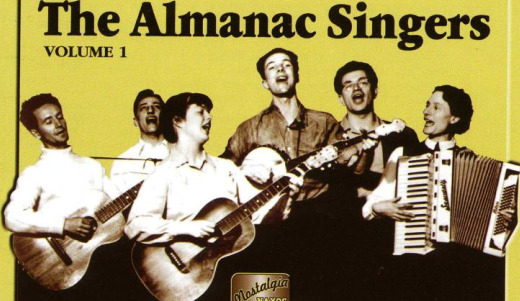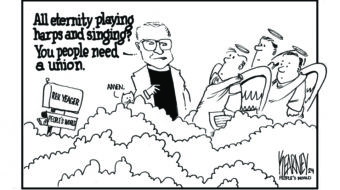
Bess Lomax Hawes, a member of the famous Lomax family of folklorists and part of the seminal left-wing folk music group the Almanac Singers, died on Nov. 27 at the age of 88.
Four decades after she was harassed and hounded during the McCarthy period, Lomax Hawes was awarded the National Medal of Arts by President Clinton in 1993 for her work on behalf of American culture.
Born in Texas in 1921, she began her journey into folk song through her father John Lomax’s important work collecting rural music throughout the U.S. The Lomaxes relocated to Washington ,D.C., during her teen years, and her father, and soon after her brother Alan, began to work for the Library of Congress, chronicling the music of the nation and offering the young Bess Lomax a vivid education into the power of culture.
She began playing the guitar at 15. Adapting to a wide array of music in various languages, she developed her repertoire of “peoples’ songs” and her guitar technique simultaneously. Within two years, she became an in-demand guitar teacher. To meet the needs of the many students seeking her instruction, Lomax created a curriculum for seminar-style lessons to teach large groups.
By 1940, Ms. Lomax was recruited by her father and brother to help catalog material for a book entitled “Our Singing Country.” At this time, Woody Guthrie was brought to Washington to record for the Library of Congress and Pete Seeger was on staff for the season. Bess’ brother Alan Lomax was seen as the major link among this new breed of radical folksingers, which grew to include Guthrie, Leadbelly, Aunt Mollie Jackson and others. Alan Lomax and leftist actor Will Geer organized a New York event to benefit migrant workers, “A Grapes of Wrath Evening,” which featured this growing generation of folk revivalists, including Bess Lomax.
Soon after, Seeger, Lee Hays and playwright Millard Lampell formed the Almanac Singers, the first urban folk ensemble. The group performed traditional music with new, left-wing political lyrics, and incorporated into their sets older songs of dissent and their own topical compositions, too. Based in a communal living space in Greenwich Village, the Almanac Singers performed throughout 1940 and ’41 for Communist Party functions, May Day parades and radical cabarets. To the Almanacs’ surprise, the group was courted by the William Morris Agency, Decca Records and even the Rainbow Room as they toured the sites of countless CIO organizing campaigns.
By 1941, the group had expanded to include Bess Lomax, who’d graduated from Bryn Mawr College and moved into the group’s townhouse, often supplying the only regular income to their communal fund. But Bess was also an important musical force, offering strong guitar playing, harmony vocals and an innate understanding of the folk process. Another new member, the illustrator Butch Hawes, became Bess’ husband soon after; they had three children over the years. Photos in this period depict a youthful but intense group of performers brandishing guitars and banjos as cultural-political weapons.
Bess, with the Almanacs, recorded several historically powerful albums for the independent Keynote label including 1941’s “Talking Union,” which produced the legendary versions of “Union Maid” and “Which Side Are You On?,” and the post-Pearl-Harbor “Dear Mr. President,” which featured the anti-fascist theme “Round and Round Hitler’s Grave.” Lomax Hawes also participated in the “Citizen CIO” wartime collection, some Guthrie recordings and an important set of Spanish Civil War songs, among others.
During the McCarthy period, the Almanac Singers were branded as “Moscow agents” due. All offers for national radio broadcasts and record contracts were now off the table. Blacklisted, their engagements became scarce and the group fell apart. Bess lost her government job and in the post-war years experienced harassment by the FBI and various rightist organizations.
In 1950, Lomax Hawes and songwriter Jackie Steiner composed “The MTA Song” for a Boston mayoral candidate running on the Progressive Party line. Ironically, it became a major hit for the Kingston Trio in 1959. This group served as the portal for many of the next generation to discover the kind of folk singing the Almanacs had brought to wider attention, though the Kingston Trio rarely if ever featured the protest songs that were at the core of the Almanac Singers.
Later, she moved to the West Coast where she taught American folklore in colleges before serving, for many years, as director of the National Endowment for the Arts Folk Arts Program.
In her latter years, Lomax Hawes continued speaking about folklore, ethnomusicology and the power of folk music as a force for social change. She is survived by her three children and six grandchildren.
Photo: The Almanac Singers, with Bess Lomax Hawes playing guitar, front and center. To her left, playing the banjo, is Pete Seeger. At left is Woody Guthrie.











Comments